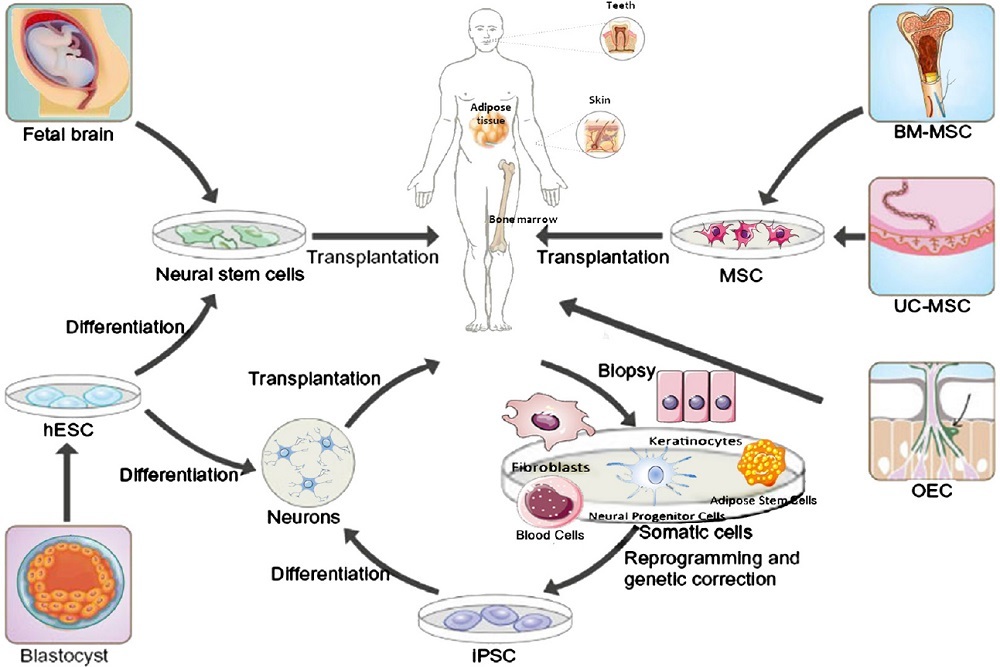
Lineage Cell Therapeutics issued the following announcement on Sep. 4.
Lineage Cell Therapeutics, Inc. (NYSE American and TASE: LCTX), a clinical-stage biotechnology company developing novel cell therapies for unmet medical needs, announced that the United States Patent and Trademark Office (USPTO) has issued U.S. Patent No. 10,286,009, entitled “Pluripotent stem cell-derived oligodendrocyte progenitor cells for the treatment of spinal cord injury” covering methods for utilizing pluripotent stem cell-derived oligodendrocyte progenitor cells (OPCs) for the treatment of spinal cord injury (SCI). The claimed methods involve injecting OPCs derived from a pluripotent human stem cell line into the SCI site and covers both human embryonic and induced pluripotent stem cell-derived OPCs. The issued patent has a term that expires no earlier than 2036.
“The issuance of this patent is an important milestone for the Company because the allowed claims provide valuable, long term protection for novel treatments employing off-the-shelf OPC1 cells designed to improve recovery outcomes following severe spinal cord injury,” stated Brian M. Culley, Chief Executive Officer of Lineage. “We believe we have one of the largest cell therapy intellectual property portfolios in the biotech industry and will continue to grow and defend our position as a leader in this exciting space.”
OPC1 cells are produced by directing the developmental lineage of pluripotent cell lines to generate a proprietary and consistent population of oligodendritic cells. These cells are administered to the patient in an effort to confer post-injury regeneration, which is intended to provide greater motor recovery compared to the current standard of care. With encouraging data already generated from a 25-patient Phase I safety trial, the current focus for the OPC1 program is to introduce commercially-viable improvements to the manufacturing process and to initiate a comparative study later in 2020.
About OPC1
OPC1 is currently being tested in Phase I/IIa clinical trial known as SCiStar, for the treatment of acute spinal cord injuries. OPCs are naturally-occurring precursors to the cells which provide electrical insulation for nerve axons in the form of a myelin sheath. SCI occurs when the spinal cord is subjected to a severe crush or contusion injury and typically results in severe functional impairment, including limb paralysis, aberrant pain signaling, and loss of bladder control and other body functions. The clinical development of the OPC1 program has been partially funded by a $14.3 million grant from the California Institute for Regenerative Medicine. OPC1 has received Regenerative Medicine Advanced Therapy (RMAT) designation for the treatment of acute SCI and has been granted Orphan Drug designation from the U.S. Food and Drug Administration (FDA).
About Lineage Cell Therapeutics, Inc.
Lineage Cell Therapeutics is a clinical-stage biotechnology company developing novel cell therapies for unmet medical needs. Lineage’s programs are based on its proprietary cell-based therapy platform and associated development and manufacturing capabilities. With this platform Lineage develops and manufactures specialized, terminally-differentiated human cells from its pluripotent and progenitor cell starting materials. These differentiated cells are developed either to replace or support cells that are dysfunctional or absent due to degenerative disease or traumatic injury or administered as a means of helping the body mount an effective immune response to cancer. Lineage’s clinical assets include (i) OpRegen®, a retinal pigment epithelium transplant therapy in Phase I/IIa development for the treatment of dry age-related macular degeneration, a leading cause of blindness in the developed world; (ii) OPC1, an oligodendrocyte progenitor cell therapy in Phase I/IIa development for the treatment of acute spinal cord injuries; and (iii) VAC2, an allogeneic cancer immunotherapy of antigen-presenting dendritic cells currently in Phase I development for the treatment of non-small cell lung cancer. For more information, please visit www.lineagecell.com or follow the Company on Twitter @LineageCell.
Original source can be found here.




